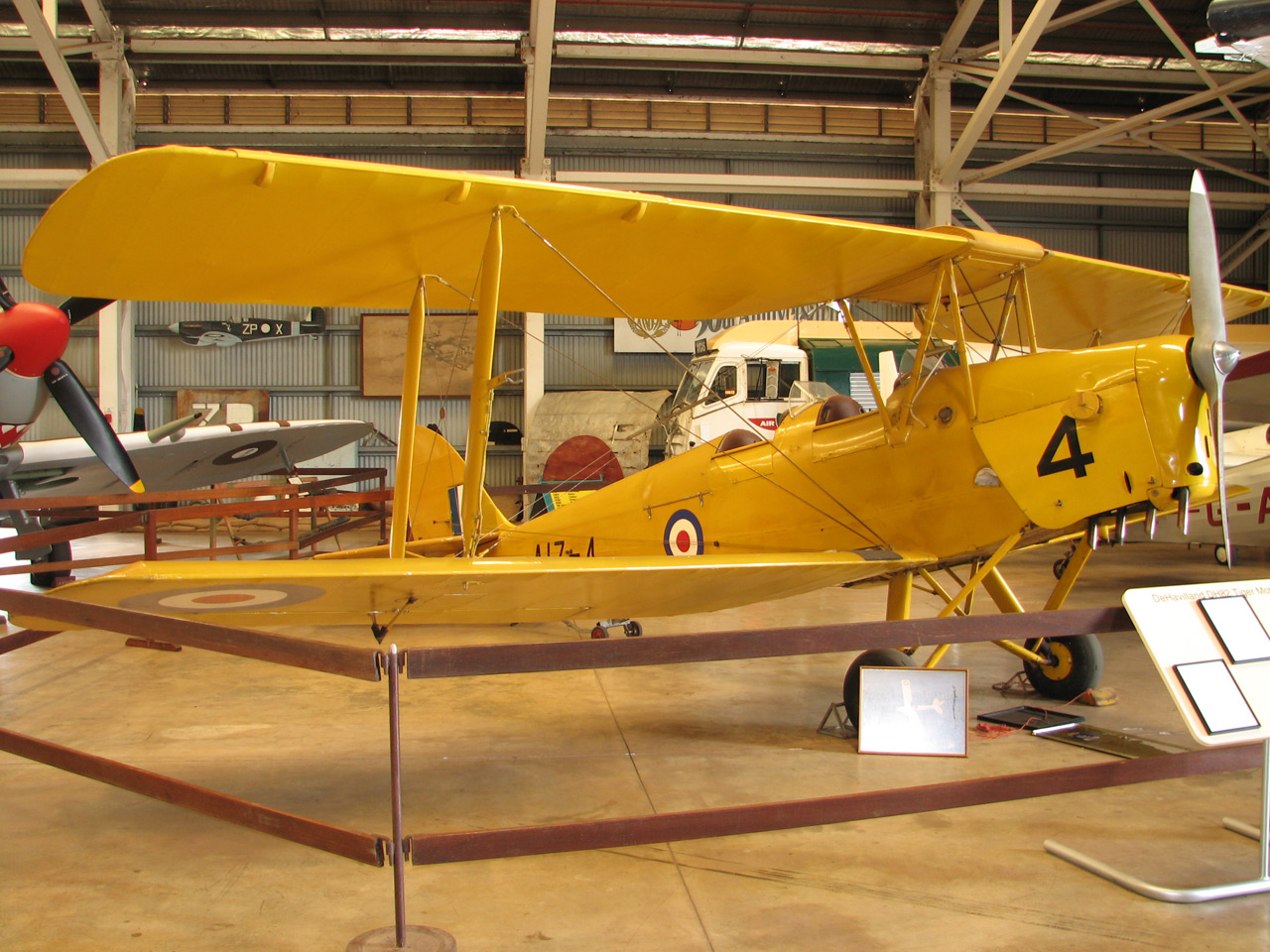MUSEUM
Darwin Aviation Museum
DESCRIPTION
De Havilland DH-82-A4 Tiger Moth A17-4
Serial number: 82558
General characteristics:
Crew: 2
Length: 7.34 m
Wingspan: 8.94 m
Height: 2.68 m
Wing area: 22.2 m²
Empty weight: 506 kg
Loaded weight: 828 kg
Powerplant: 1 × 130hp (100kW) de Havilland Gipsy Major I inverted 4-cylinder inline engine
Performance:
Maximum speed: 97 kts at 1000ft (175 km/h at 300 m)
Cruise speed: 100 km/h (59 kts)
Range: 486 km (250 nm)
Service ceiling: 13,600 ft (4,145 m)
Rate of climb: 673 ft/min (205 m/min)
Main photo courtesy Ken Hodge
HISTORY – (PROVENANCE)
The Tiger Moth aircraft on display at the Museum is one of the oldest remaining examples of the Tiger Moth built/assembled in Australia – one of 1,000 used as basic trainers used during WWII. The Tiger Moth first flew in 1931 and was one of a long line of successful De Havilland bi-planes.
It was considered the best trainer for the British Commonwealth Air Forces in WWII and as post war surplus aircraft, was widely used by aero clubs for flying training for many years afterwards. There are still many examples world-wide flying today.
The Museum’s aircraft was built in Australia in 1939 for the RAAF and served with 22 Squadron and No’s 2 and 5 Elementary Flying Training Schools where it survived a number of mishaps. After the war it was sold to the Royal Aero Club of South Australia for 100 pounds.
In 1981 Stan (Bones) Phillips bought and restored A17-4 and flew it around Darwin for many years. In 1998 this aircraft was purchased by the Aviation Historical Society, through a Grant provided by the Northern Territory Government, for display at the Aviation Heritage Centre.
21-6-39 — 2AD received aircraft A17-4 from De Havilland
10-7-39 — Allotted to 22 Squadron RAAF
26-7-39 — Taxied into demountable top main plane damaged
5-1-40 — Allotted to 2 Elementary Flying Training School (EFTS)
3-1-41 — Ground Looped – aircraft damaged
27-3-41 — Landed on boundary fence structural damage
4-4-42 — Allotted to 5EFTS
5-8-42 — Engine failure during practice, forced landing aircraft overturned
13-1-44 — Sent to de Havilland at Mascot for complete overhaul
5-4-44 — Moved from de Havilland to 2AD
25-4-44 — Transferred to 5AD for storage
7-6-46 — Offered for disposal
30-9-46 — Sold to Royal Aero Club of South Australia for 100 pounds
16-1-47 — Issued to purchaser
8-1-81 — Acquired and restored by Stan Phillips
1996 — Acquired by the Aviation Historical Society of the Northern Territory for display in the Aviation Heritage Centre



